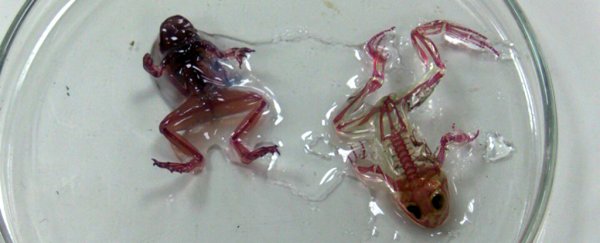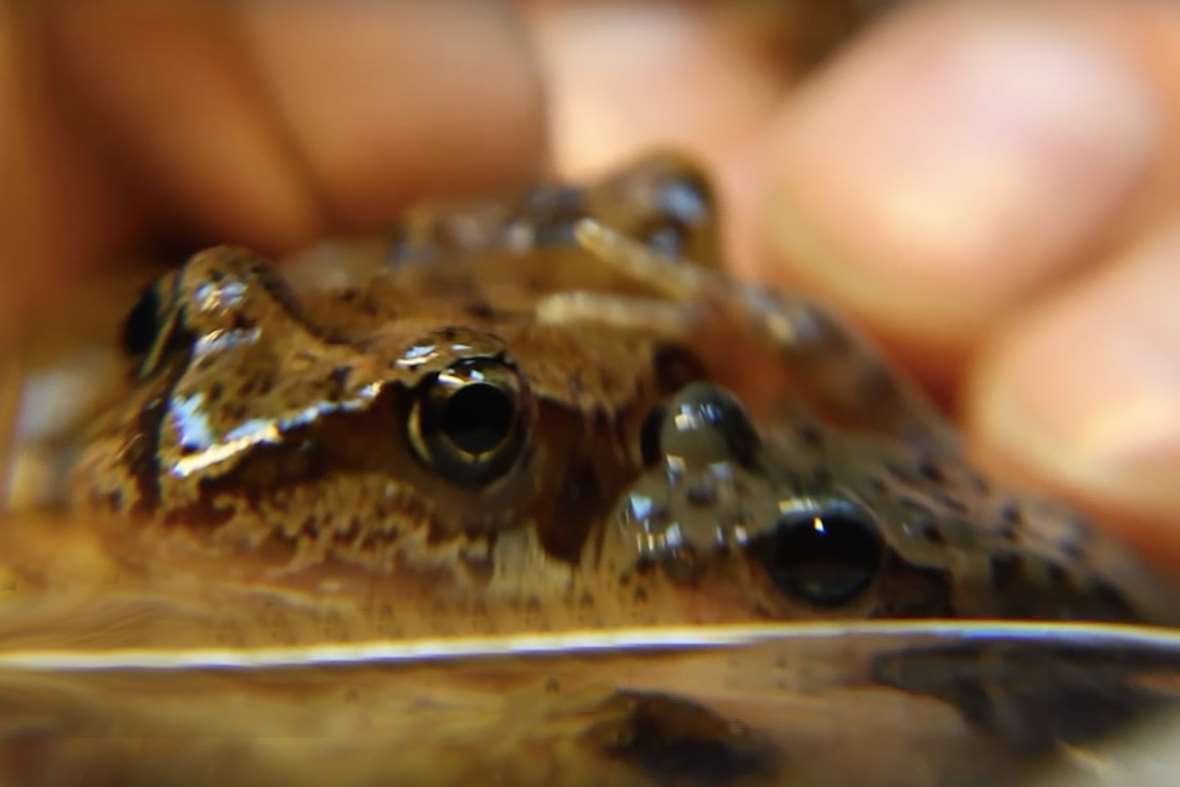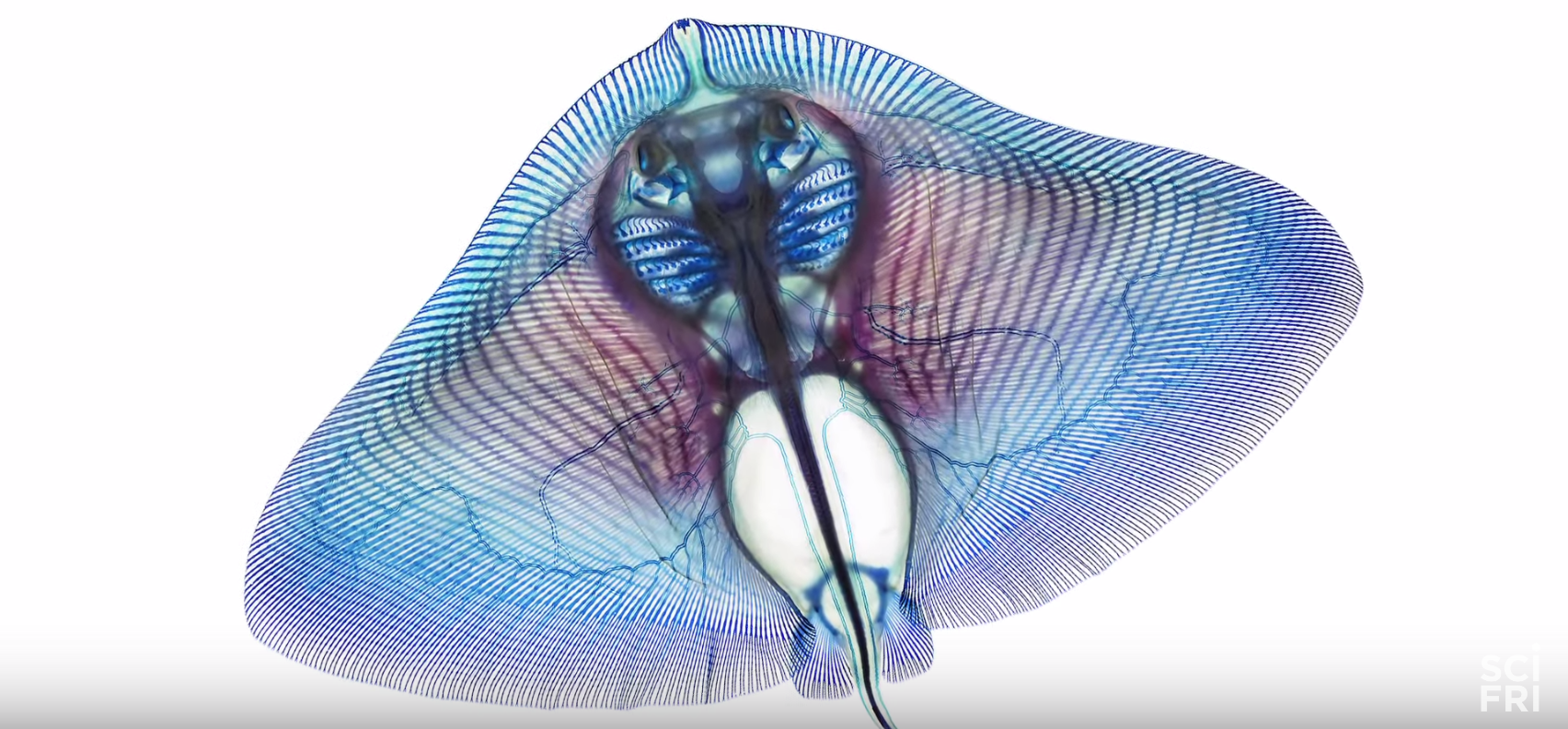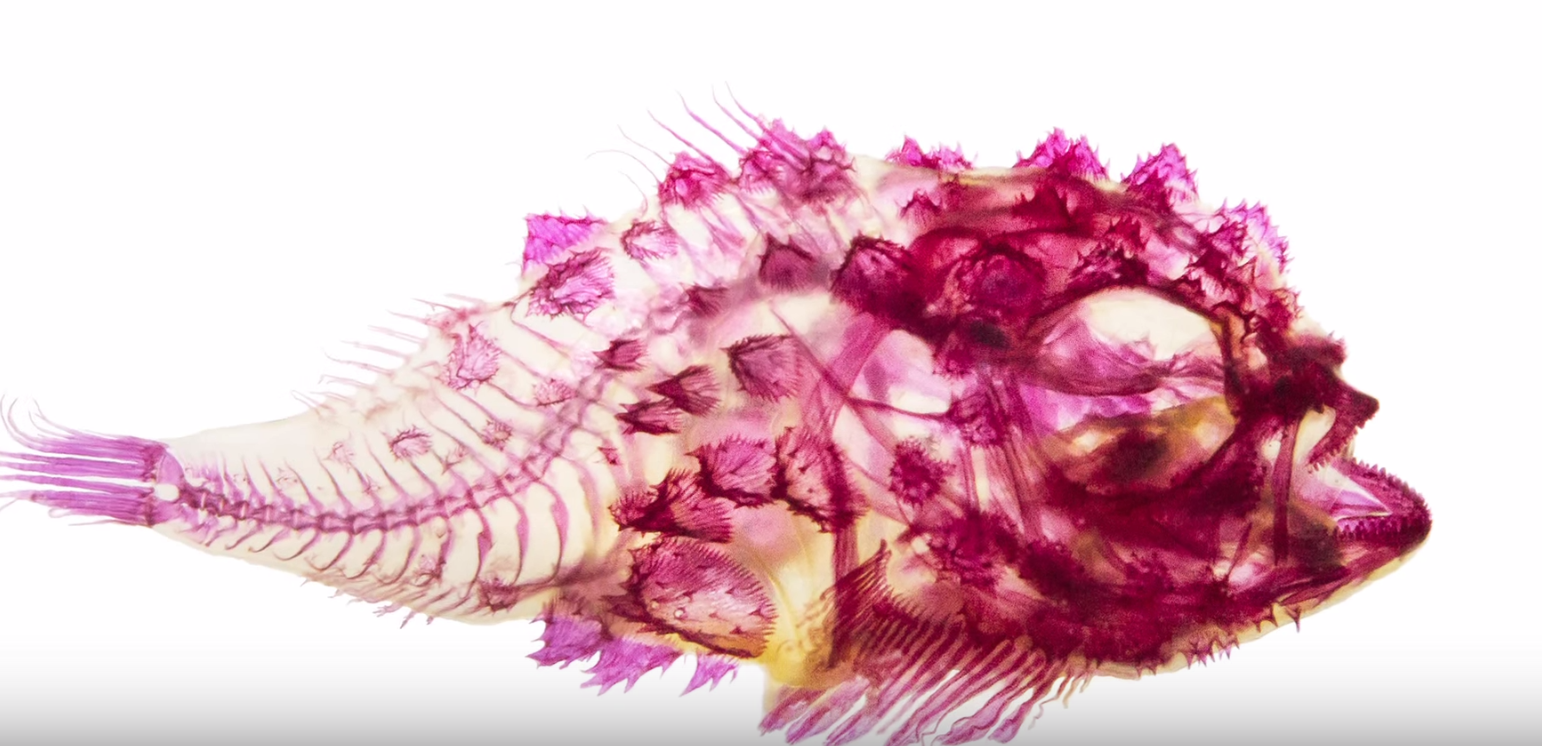The internet is going a little nuts this week with claims that Russian scientists have discovered a group of see-through 'mutant frogs' living in the polluted waters of a mining town.
According to sites like the Daily Mail, the newly discovered frogs have transparent skin that reveals their pink skeletons, organs, and even their beating hearts. And, looking at the associated image above, that certainly seems to be the case.
But the problem is, that scary photo doing the rounds with the story isn't actually what the frogs look like. In fact, while they have some slight abnormalities, they aren't really see-through at all.
Nightmarish ‘mutant frogs’ have see-through skin which exposes their beating heart https://t.co/dxZD1tWsll pic.twitter.com/v0RWifmeo9
— The Sun (@TheSun) June 27, 2016
So… what's going on here? Well, a group of around 60 mutated frogs were discovered by zoologists from the Ural Federal University (UFU) near the mining town of Krasnouralsk in central Russia, and the researchers do suspect their abnormalities are due to environmental pollution.
They also have a pigment irregularity that makes them slightly transparent - but nowhere near the level the internet would have you believe.
This is what the Russian 'mutant' frogs actually look like:
What that crazy image at the top of the article shows is the frogs after they've gone through a standard biological imaging technique known as diaphonisation - or 'clearing and staining' - a process used to observe the anatomy of animals in their natural state.
Diaphonisation works by using an enzyme called trypsin to strip most of the proteins from the body, while leaving collagen intact to preserve the animals' structure. Scientists then stain certain parts of the body to get a better idea of what's going inside.
In this case, the skeletons appear pink because the frogs have been stained with a dye known as alizarin red, which is attracted to calcium.
Diaphonisation is cheaper than CT scans, and is so simple you can actually try it yourself (very carefully) with the right equipment. Below are some other incredible images of specimens that have undergone diaphonisation:
The UFU scientists did this to the frogs to better understand whether it was environmental pollution, or something else, that had triggered their mutations.
Mainly, they were interested in a pigment irregularity in the frogs that made them slightly more transparent than a regular frog. Some of them also had missing or partially formed limbs.
And this is where the story seems to have gotten confused. Vershinin told the media: "Their eyes are absolutely black and the internal organs are visible through the belly of the animal. You can literally see the heart beating."
That sounds pretty extreme, but you actually can see through their bellies - just not to the extent of the diaphonised frogs being photographed alongside the articles.
Check it out for yourself below, with the frog on the right's organs clearly visible through its skin:
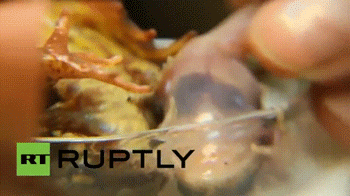
Sarah Keartes over at EarthTouch News Network explains that while the real frogs might not seem as exciting as the diaphonised ones, they're still pretty fascinating.
"This story is a good example of real problems - and in this case, real mutants - being buried under bad reporting. Against the allure of 'nightmarish' pink-boned frogs, the actual mutations Vershinin observed seem relatively unimpressive, yet the team explains they could be indicative of environmental changes affecting an array of Russian plants and animals."
The team is now bringing over an amphibian pigmentation specialist from Japan, Keartes adds, to perform genetic analysis on the frogs to figure out exactly what's going on.
While the UFU team can't be sure as yet that environmental pollutants are involved, researchers already know that amphibians are susceptible to toxins, particularly as developing embryos.
One of the bigger issues here is why this image was passed off as the 'real frogs' in the first place. The story was distributed by Central European News (CEN), which Keartes explains is known for its sensationalised stories.
As BuzzFeed reported back in 2015 (before being sued by CEN):
"The firm's business model, like that of many other news agencies, is to sell a regular stream of stories and pictures to other media companies, which publish them under the bylines of their own reporters …
In CEN's case, these include a string of stories from relatively remote parts of China, India, Russia, and other non-Western countries. They tend to depict the inhabitants of those countries as barbaric, sex-crazed, or just plain weird. And often they are inaccurate or downright false."
So what can we learn from all this? Well, there are mutant frogs in Russia, and they might be a result of heavily polluted waters. The jury is still out on that for now until we have more information, but one thing's clear - the frogs definitely don't look like the ones you've probably seen circulating in your news feed.
You can find out more about diaphonisation below:
